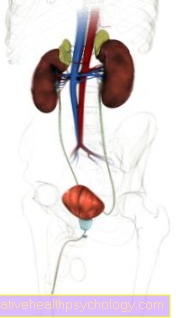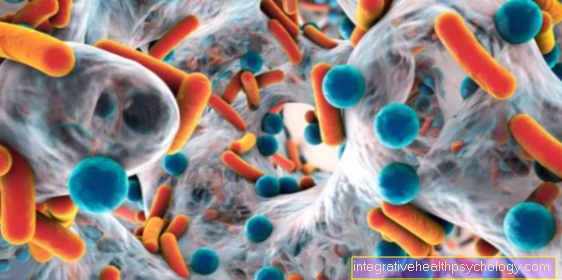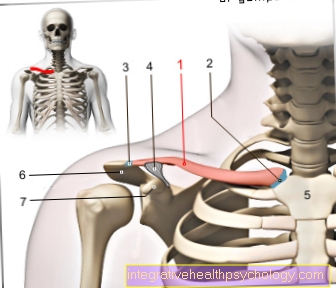Alpha-glucosidase
What is Alpha Glucosidase?
Alpha-glucosidase is an enzyme that occurs in various sub-forms in all cells of the body. Not every sub-form necessarily has to appear in every cell.
The task of alpha-glucosidase is to split alpha-glycosidic bonds. This type of bond describes a form of linkage between individual sugar molecules. Individual glucose molecules can be linked to form large chains of several thousand sugars, so-called polysaccharides, which are broken down by alpha-glucosidase.
Task and function
Each sub-form of alpha-glucosidase differs in terms of its location.
A common form is maltase glucoamylase, which is produced in the superficial cells of the intestinal mucosa, the kidneys and some immune cells. In addition to this form, there are other sub-forms in the tissues mentioned. Like any alpha-glucosidase, maltase-glucoamylase also cleaves alpha-glycosidic bonds. However, they are preferably dissolved in disaccharides, sugar chains made up of two individual sugar molecules. By separating the disaccharide into two monosaccharides, it is possible to absorb the individual sugar molecules into the body through the mucous membrane of the small intestine. Thus, the enzyme plays an important role in the digestion of sugars. In the kidney, disaccharides, which are filtered out of the blood by the kidney and are then located in the primary urine, a precursor of the terminal urine, are also preferentially split into individual monosaccharides which can be reabsorbed into the body by the kidney cells. This is an important process to prevent a high loss of energy through the excretion of sugar in the urine.
Another sub-form of alpha-glucosidases occurs in the lysosomes of every cell. Lysosomes are cell organelles that break down substances that accumulate in the cells and cannot be used. The subform that occurs here is called lysosomal alpha-glucosidase or acid maltase, analogous to the cell organelle. Its task is to break down chains of sugars that the body cannot use into monosaccharides so that they can be more easily used and excreted.
There is also a subform of alpha-glucosidase in the liver, which is essential for the body's energy metabolism. Among other things, this form is responsible for the breakdown of glycogen. Glycogen is a polysaccharide that consists of tens of thousands of molecules of glucose and is the form in which glucose is stored in the body. When the body needs energy, be it through hunger or sporting activity, the energy store is broken down by alpha-glucosidases, which means that the necessary performance can continue to be provided.
The same alpha-glucosidase subunit found in the liver is also found in muscles. Here, too, there is a glycogen store that can be reduced if necessary. However, the released glucose molecules are not made available to the body, but rather serve the muscles as an energy supplier.
You might also be interested in this topic: Task of enzymes in the body
Where is alpha-glucosidase made?
Like the majority of human enzymes, every form of alpha-glucosidase is produced in special cell organelles. A precursor of the enzyme is first synthesized in the endoplasmic reticulum. A first step in maturation towards the mature enzyme takes place there.
The transport to the so-called Golgi apparatus then takes place. Ripening also takes place here. In the Golgi apparatus, the enzymes are packed in special vesicles and transported to their destination.
The destination differs depending on the tissue. In the liver and muscles, the target is special intracellular granules in which glucose is stored as glycogen. Transport to the cell membrane takes place in the intestines and kidneys. The vesicles are emptied here, as the site of action of the alpha-glucosidase is outside the cells. The lysosomal alpha-glucosidase is packaged in vesicles that fuse with the membrane of the lysosomes.
Learn more about protein biosynthesis on our website: Ribosomes
What is beta-glucosidase?
Beta-glucosidases are enzymes which, like alpha-glucosidases, break glycosidic bonds by consuming water. While alpha-glucosidases break alpha-glycosidic bonds, beta-glucosidases break beta-glycosidic bonds. The difference between the two types of bond lies in the arrangement of an alcohol group of the linked sugars. How this behaves depends on various complicated factors.
Humans can only split beta-glycosidic bonds to a limited extent. This plays a role, for example, in the utilization of lactose. Lactose is found in products containing milk and is commonly referred to as milk sugar. Since many people in Central Europe do not develop lactase, the enzyme that splits the beta-glycosidic bond of lactose, these people are lactose intolerant.
Furthermore, there are deficits in the utilization of cellulose. Since humans do not have an enzyme that can break down cellulose into its components, it is considered to be dietary fiber that cannot be digested and is excreted directly again.
Read more about: Symptoms of lactose intolerance
What is the transglucosidase?
A transglucosidase is an enzyme that occurs in the human body and plays an important role in the synthesis and breakdown of glycogen. It is also known as glucan transferase.
The main task is to move monosaccharides, disaccharides or oligosaccharides with three sugar molecules within the glycogen. This shift is especially important for the breakdown of glucose molecules that have more than one bond to an adjacent glucose molecule. If this is the case, the enzymes, which are normally responsible for breaking down the glycogen, cannot continue to work, since such connections between one glucose molecule and two others represent an obstacle.
For this reason, the transglucosidase can break the connection between the chain of glucose molecules with several bonds and transfer the released chain of di- or oligosaccharides or the monosaccharide to another free end of the glycogen. In the following, the breakdown of the glycogen for the further provision of energy for the body can be continued.
Read more about enzymes under: α-galactosidase








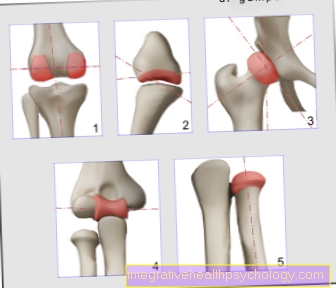







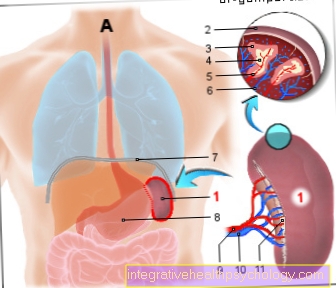
.jpg)




